Continuing my adventures with KL of KL’s Self Discovery, we stopped in on our way back from Moeraki to the Truby King Recreational Reserve, site of the infamous Seacliff Lunatic Asylum. It was still drizzling so we rugged up once more and entered the reserve, KL’s three hardy children in tow.
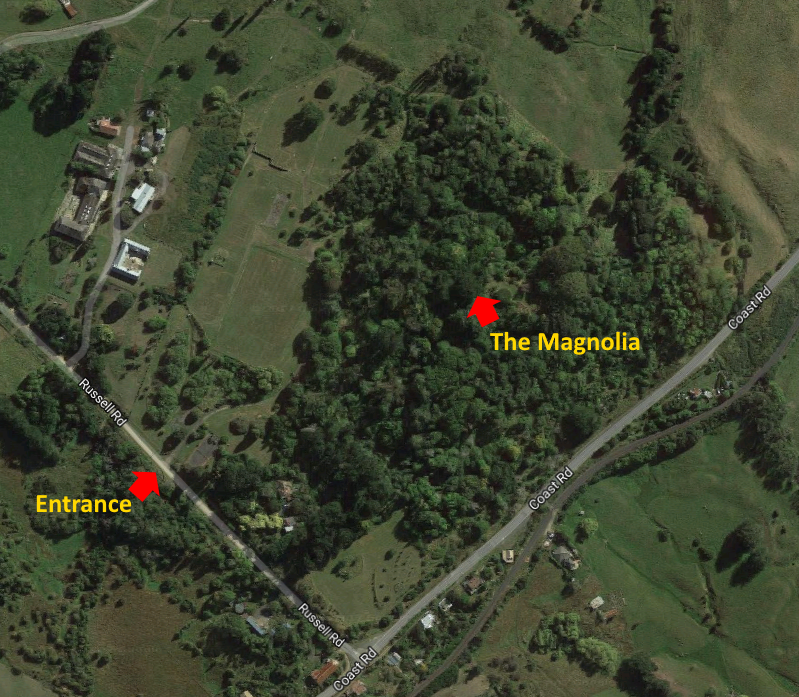
The entrance was up a seemingly dead end street which morphed quickly into a dirt road. A single chain slung across prevents vehicle access up what once would have been a stately drive towards the asylum entrance. On our right was a disused tennis court, and to our left a mysterious flat area lined with cracked concrete. Continuing, we proceeded up an avenue lined by trees.
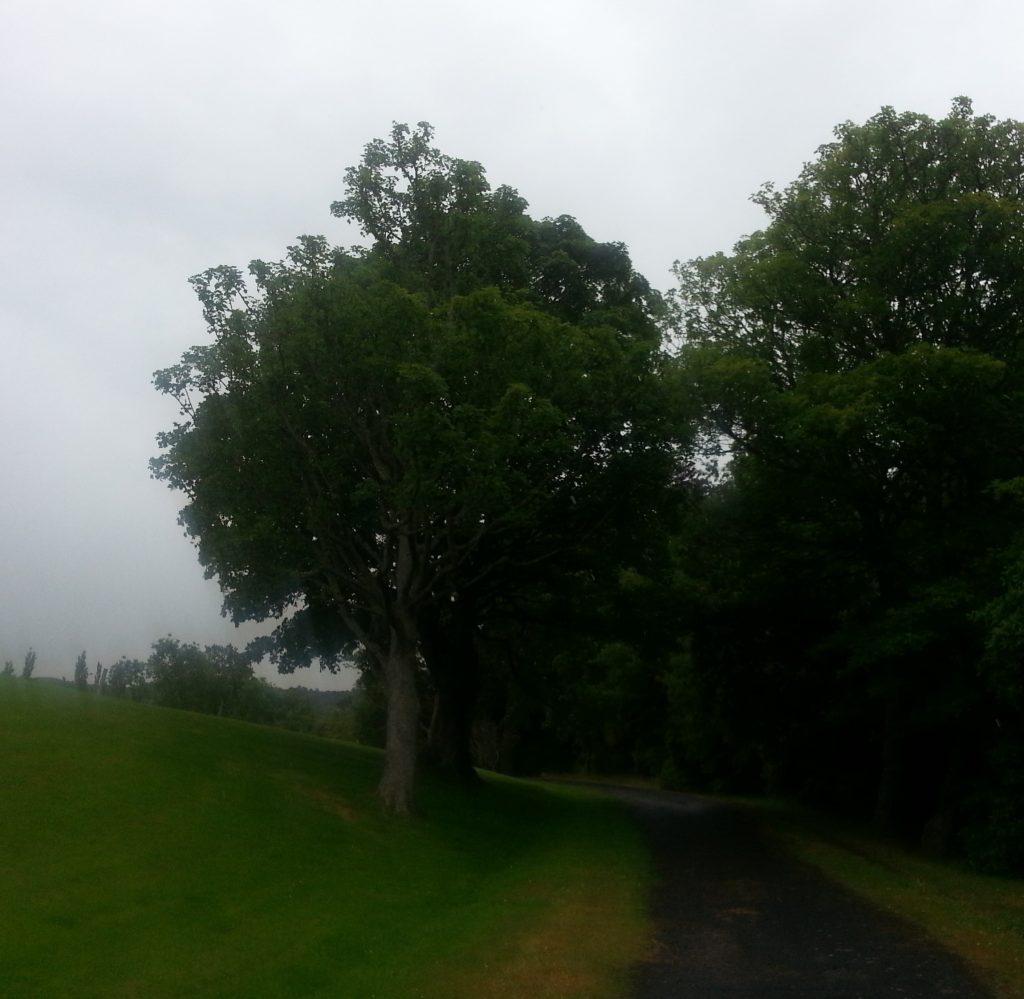
Although this place is best known in the imagination of Dunedinites as a site of suffering and disaster, the naming of the reserve aims to redeem it. Truby King was medical superintendent of the Seacliff Lunatic Asylum for 30 years, starting in 1889, and he is most famous for founding the Plunket organisation and promoting standards of infant care which helped to drastically decrease the child mortality rate. His system was revolutionary as it circumvented male doctors and empowered prominent women in the community to take a role in helping their fellow women to improve their children’s health.
Well I’m quite glad to see that at least one good thing came from…oh wait, Truby King was a eugenicist? He believed that education of girls in anything other than domestic roles would render them unfit for motherhood? He believed that mental illness was caused by bad mothering? Dang.
Even if the Plunket Society was established under shady circumstances, there is no doubt it remains influential and has evolved into something which helps many mothers these days. I would certainly be interested in hearing first hand experiences, being (apparently) unfit for motherhood myself!
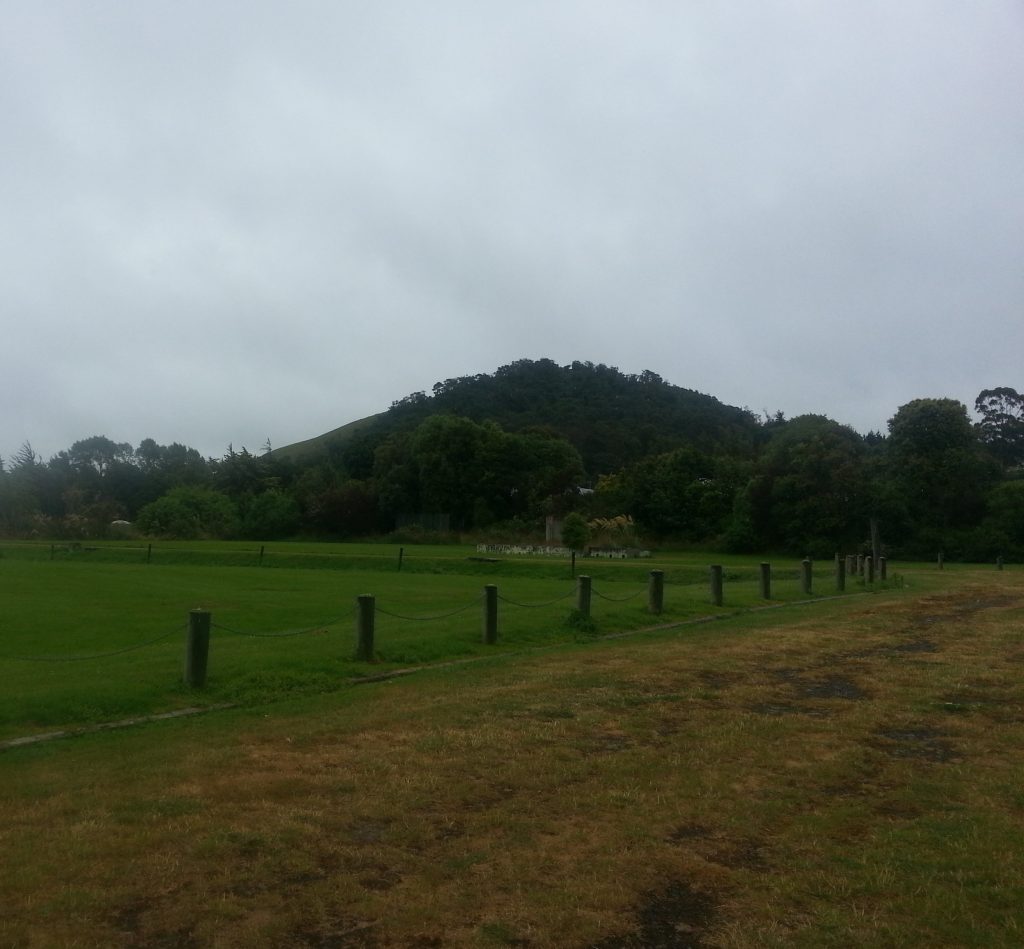
Shortly we came to what would once have been a grand view towards the main entrance of the sprawling gothic megastructure, which was the largest public building in New Zealand for fifty years from its opening in 1884. It replaced the Littlebourne Mental Asylum, sited near Otago Boys High School, which was proving thoroughly inadequate in light of Dunedin’s burgeoning population brought on by the gold rush.
To our right was a memorial conifer to the staff and patients of the asylum – it was a large source of local employment.
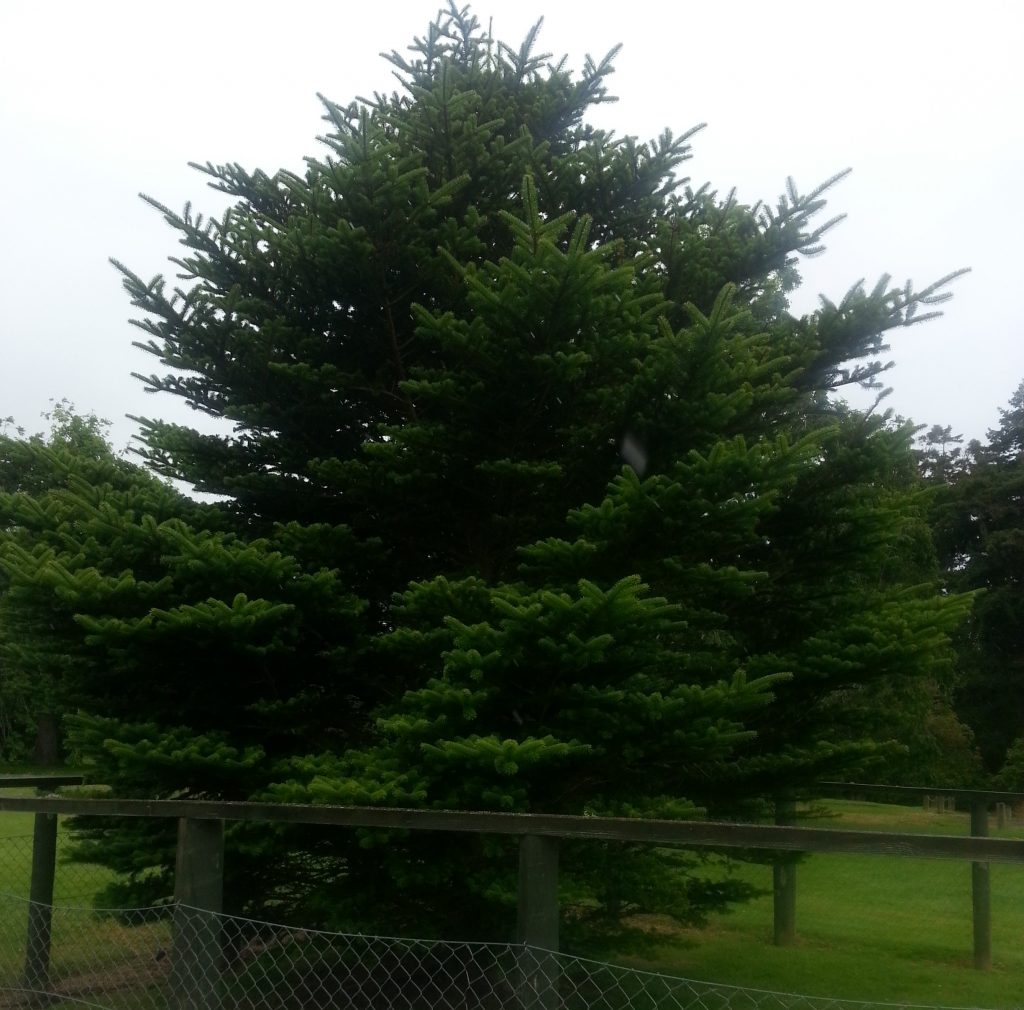
Although the plaque does not directly say so, the tree could also be thought to commemorate the 37 women who perished in the great fire of 1942 – for which there is currently no explicit memorial. At the time, it was New Zealand’s worst loss of life to fire, caused mainly by the wartime shortage of staff and the fact that all the windows and doors of the secure ward were kept locked at night. It’s been suggested that the lack of recognition for this terrible loss of life is rooted in our casual disregard for the mentally ill, so I hope this sad fact will be corrected – especially since, as we shall learn, many of the inmates here had conditions that were dreadfully mis-handled.
Venturing on to the flat site of the asylum, we found only one ruined foundation remaining, with tell-tale toilet pipes. Here we found ourselves in a sticky situation, as we had to explain the significance of the site to KL’s eldest child. Of course it was baffling to her, and I hope that this is a sign for the future of our country – that we treat difference with compassion and acceptance, not exclusion and ill-treatment.

It is sad to say that the magnificent asylum building was doomed from the start, due to the unrelenting movement of the land upon which it was built – the same problem that caused the abandonment of the rail tunnel at nearby Brinn’s Point. Although no definite cause has been established for the devastating fire, an electrical fault caused by shifting foundations has been suggested. The main building was demolished in 1959 and the last surviving building (presumably the one we were currently viewing) in 1992.
We continued deeper into the reserve, along what might once have been the rear of the enormous asylum building.
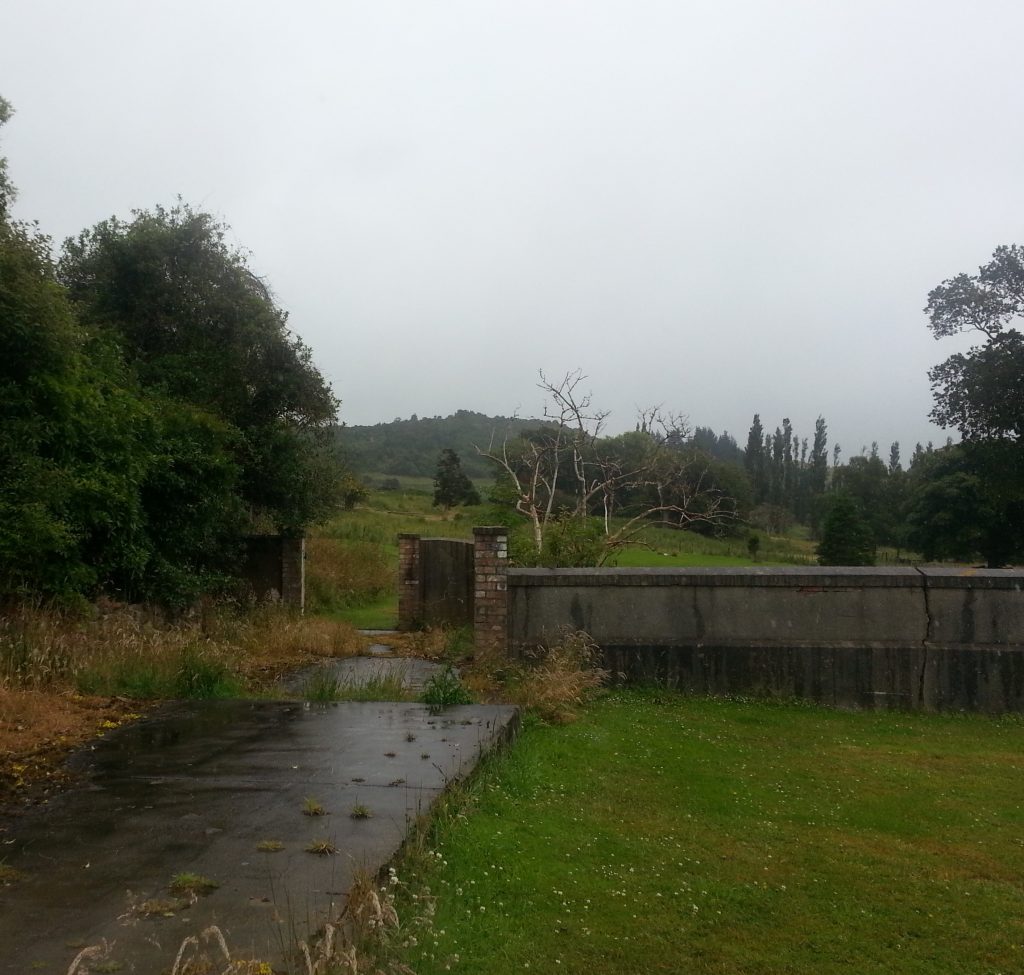
Slightly outside the reserve boundary I noticed a mysterious staircase. I left KL and the kids in the safety of the reserve while I squeezed through the electric fence and investigated. Not much remained at the top of the steps but a flat space. Janet Frame, during her time at Seacliff, described “a building called Simla, away up on the hill”. My sources were not clear whether Simla was the wooden extension which burned down on that fateful night, or one of the separate “cottages” which housed “difficult” patients.

Not inclined to stick around, I rejoined KL to walk down a pleasant path through the overgrowing bush that might once have constituted a lush and relaxing garden. We soon emerged into a picnic area amidst several large trees, and a bit of poking around revealed signs that a semi-circular flower garden had once featured nearby.

We crossed a cracked concrete bridge across a small overgrown stream bed and were drawn to an unassuming plaque set below a spindly tree. This little tree, looking fairly unimpressive in this season, is “the Janet Frame magnolia”, which she mentioned in her first two books, Owls Do Cry and Faces in the Water. It was “rediscovered” in 1996 as her fame reached its peak, and the surrounding vegetation was cleared away to allow visitors to view it.
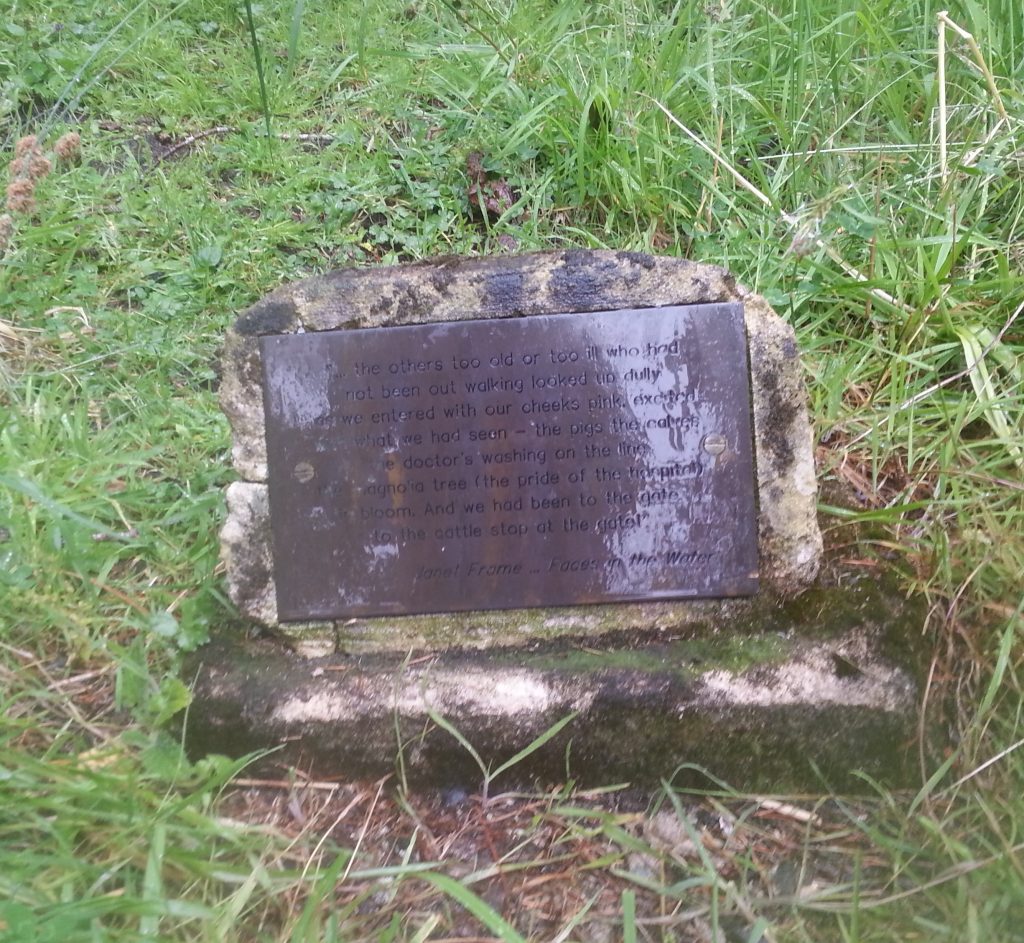
This is the only reference on the grounds to the asylum’s most famous resident, and that’s probably the way she would prefer it, since the stigma of having spent time in mental asylums followed her throughout her life – despite the whole ordeal being based on a massive misdiagnosis!
It was a combination of social struggles, difficulty coping in teacher’s college and infatuation with a psychology tutor at university that lead to Janet’s hospitalisation when she was only 21. This hits uncomfortably close to home for me because I faced very similar struggles in my early twenties – it makes me shudder to think that had I been born sixty years earlier I too might have been committed to this place.
The doctors diagnosed her with schizophrenia, based partly on the (willful or ignorant?) assumption that her love of using descriptive metaphors indicated actual delusions. At the time this was said to be an incurable illness, and the only prediction for sufferers was that they would gradually lose all mental faculties.
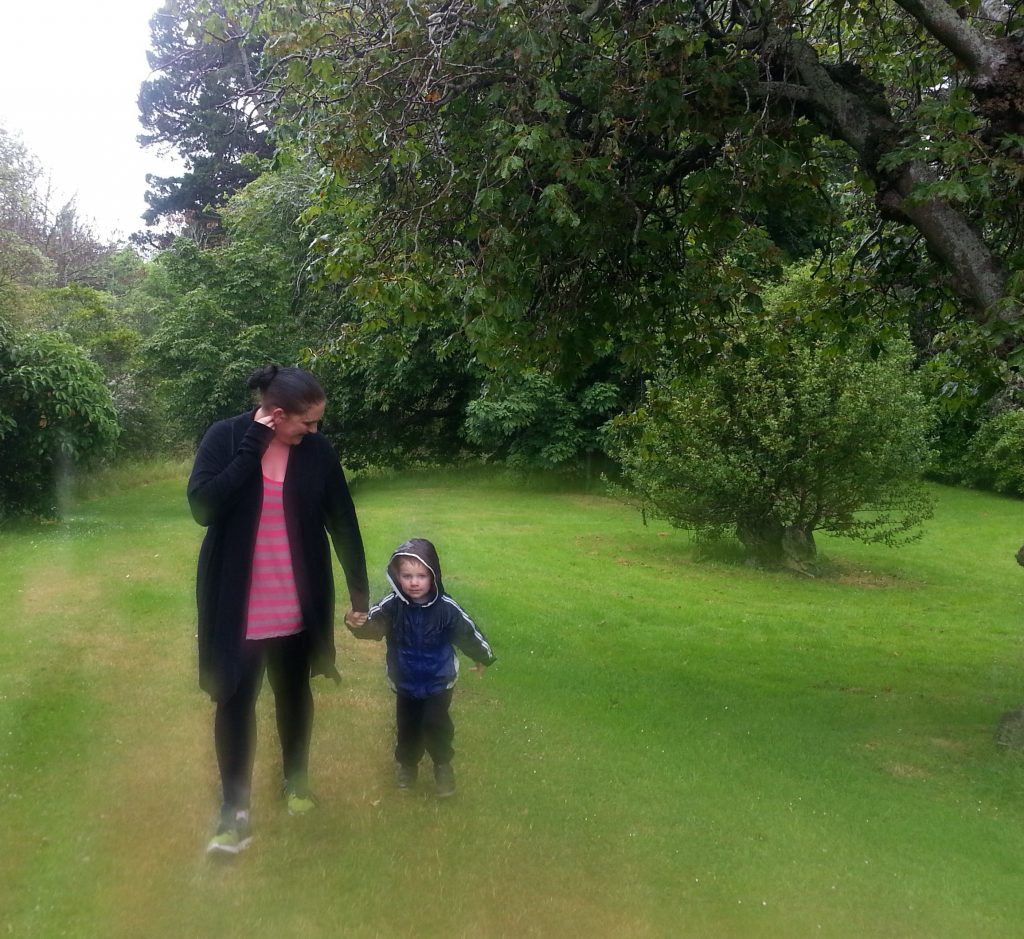
Once made, the diagnosis was never once questioned, and Janet spent the next ten years in and out of mental institutions being treated by electric shock and insulin. As the oft-told story goes, she was only saved from a scheduled leucotomy by the publication of her first book, The Lagoon and Other Stories. While the tellers of this tale seem to recognise what we almost lost, I am not sure they always fully grasp what we did lose. Because surely many others did not have a fortunately-timed publication to save them, and so had their futures stripped away along with much of their intellect and personality.
It was only when her supportive writer friends arranged for her to visit Europe that checked into the comparatively enlightened Maudsley hospital in London, and received the stunning news that she had never had schizophrenia. In fact, most of the problems she was now facing stemmed directly from her years of institutionalisation. After ten years of believing that she would slowly descend into madness, Janet now had to face the idea that she was perfectly sane. Her therapist, Dr Robert Cawley, helped her to work through her difficulties coping with independent life, and slowly she gained the confidence to pursue her own path rather than meekly submit to the will of others.

It was this doctor who she would enlist throughout her life to rebut sloppy journalists and biographers who simply couldn’t resist the angle of “the mad artistic genius”. Knowing this, I feel a little guilty that my only mention of her so far discusses her mental health – so I’m making a promise to find another place that is significant to Janet Frame, but which brings a different part of her story into light.
But for now it was time to leave the lone little plaque and make our way back through the damp grass and overgrown grounds to take one last reflective look over the space where the main asylum building once stood. It is hard to fathom what went on here, not in my lifetime, but certainly within memory of people whose lives have intersected with mine. We’ve come a long way in those years, and I can only hope that as time goes on we will continue to improve in our responses to those who struggle with mental health, or who – like Janet Frame – are simply a little different.
References:
History of Seacliff: Establishment
Eugenics in New Zealand by Hilary Stace
Memorial bid for hospital fire victims by Eileen Goodwin
Deadly fire at Seacliff Mental Hospital
Wrestling With the Angel by Michael King

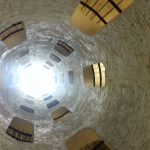
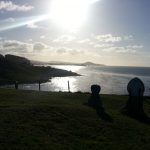
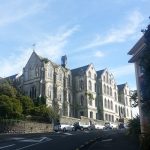
A nice bit of local history
Great bit of writing thank you
I remember seeing a building to the right of the driveway not far from the entrance around 25 years ago which could have been a secure unit. This could have been the one demolished in 1992 or maybe it is now a private dwelling – sounds more like it was demolished though. There is a house in Oamaru open to the public where Janet Frame spent her earlier years.
Further enquiries have led me to believe that the building I was thinking of was Clifton House and was used for returning soldiers suffering from PTSD etc during WW1. This was apparently demolished around 1992/93.
The steps that you climbed and the flat area behind it was the Nurses Home,the zigzag wall to the south are the partial remains of the foundations of the Nothwing of the main building and was demolished after subsiding and behind that stood the two story building which was ward 5 and it burnt down in Dec 1942 claiming the lives of 39 Femail patients.”Similar” was a ward that was situated aprox 1.5 miles,North from the main gate ( The entrance to now private property) and Further up on the hill also the the crazed flat area opposite the tennis court are the remains of another tennis court.Finally the building that was on the left just above the existing tennis court was called “Clifton House” and was built to initially accomadate soldiers that were suffering PTSD fro WW1
Thanks for clearing that up Arthur!
If you you need anymore info on the hospital and the grounds get in touch, via my email address, and I might be able to help you out. I have lived in the area off and on since late 1961
Hi, just as an of chance, I don’t suppose you know were those that died as a pauper at Seacliff were buried ? My grandfather died at seacliff and all I know is he was buried as a pauper.
Might be in a mass grave at Anderson’s Bay Cemetery, where my father discovered one of our relations is buried. X
What lovely holistic descriptive writing about a place of such historical significance.
Thankyou:)
Good information here, thanks
Nice view in there
There is a memorial at the site now, I was there today paying me respects. I made a daisy chain with 37 daisies, to commemorate the 37 ladies who lost their lives in the fire, and hung it on the memorial.
What a lovely way to support the victims! I have seen the new information panel and have been considering writing an updated story but haven’t yet found the time
Surprised you didn’t stumble across the big concrete cross in the bush. Many hidden gems on that site, most of it was burried there.
About ten years ago a friend and I (who were in our late sixties) stayed at the Back Packers Hostel at Seacliff Lunatic Asylum. Quite an eerie place to spend the night at believe you me. We visited the Truby King Reserve. There was an information panel showing the Asylum as it had been. I aimed my camera, to take a photo. But the camera just went click, tried again with the same result. So I quickly swirled around, took a photo of a tree, then swirled around again and got a photo of the information panel. This had never happened with my camera, before and after this incident. Who was trying to stop me taking the photo???
Thank you for this, brought tears to my eyes. Have only recently discovered that my grandmother, who died before I was born, spent much of my father’s childhood in and out of this institution. For my father, the result of this, amount other things, has been deeply embedded shame around mental illness and his own battles with depression. So many unanswered questions about the treatment of the women in this place. I wish I knew more.
Is it still possible to access the remaining building. My father lost his 8 year old brother here and after 60 years would like to go to face his memories. I would really like to help him with this.
Hi Ana, the remaining building is on private land, but the public reserve contains the foundations to several buildings. I hope you and your father can find peace. If he would like to share his story, please let me know. I would love to add more human perspectives to this story.
Giday Amanda
I was a nurse at Cherry Farm in the 1960
Seacliff was where we tutored for the nursing exam
I now live in California I am building a Gate with a lock to my memory’s at Cherry Farm and Seacliff
I am looking for a key that was issued to staff
I have some photos
David
Hi David
I have been fascinated to read this.
I wonder if you knew an elderly patient at Cherry Farm called John Garrick, in 1960?
I have just found out about John and his sad life, this summer.
John was born on the Garrick’s Farm at Papanui Inlet (near Wickliffe Bay) in 1881 and he helped his Mum (Annie Garrick) farm there as a young man. John’s father, William Garrick, had owned the farm until his own premature death in 1888. William was a settler from Shetland – and my great, great, great grandfather. His son John (from his 2nd marriage) was committed to Seacliff in or before 1906, when he was in his early twenties. I found a record in the Police Gazette from that year, noting that John had escaped from Seacliff. Clearly he was caught and returned there.
John Garrick spent the next 55 years at Seacliff and at Cherry Farm, when Seacliff was decommissioned. He died at Cherry Farm on 2 September 1961, at the age of 80, having spent his whole adult life in a mental asylum.
No-one claimed John (most of his siblings and half-siblings had died by 1961) and – as was the case for many asylum patients at Seacliff and Cherry Farm – his body was provided to the Otago Medical School for teaching purposes.
John’s body was finally cremated in November 1964, three years after his death. According to the cemetery record I found for him, John’s ashes were scattered; there was no service for him. He had become invisible and forgotten in his long years of incarceration. Yet he died only 3 years before I was born.
I wonder why John was committed? Was he depressed? Delusional? Suicidal? Epileptic? Homosexual? Would he have spent his life locked up today?
If you knew John in the last year or two of his life, it would be great to hear from you. And otherwise to talk with you about your experiences at Cherry Farm, if you’re willing to share.
If yes, please reply to this post and I’ll work out how we can be in contact.
Kind regards
Kate Ryder
David there is a permanent memorial exhibition about Seacliff asylum on display at wakari hospital in Dunedin. The staff key is there, would you like me to take a photo of it for you?
Does anyone know what happened to the lady johanna Beckett,? Her picture has captured me today and I’ve searched just about everything about her but nothing sadly !
Our family has long cherished an unusual influence of Truby King. My great granddad was his farm manager, it seems and his children’s names were all chosen by the great man:
Victor Lancaster
Maurice William
Max Tucker
Jack Renata
George Cyril Vincent
Waldorf
Excellent article! We are linking to this particularly great article on our website. Keep up the good writing.
Hi Hamish, I am helping someone research Andrew Sutherland who was the Farm Manager at Seacliff and was very close to Truby King. I understand that Andrew lived in the house just below the lookout overlooking Karitane. Do you know if Andrew lived in any other houses at Puketeraki as my friend is trying to find this out. Any information would be most greatfuly accepted.
I was a nurse-aid at Cherry Farm in 1965 and did some shifts at Seacliff in the children’s ward. It broke my young heart to see those abandoned children locked in, all together. There were Downes Syndrome children, epileptics and one very sad case of Spina Bifida. She was 9 years old and in a cot.
I always hoped those children had a better chance at life after my time there. It was a very sad start to my working life.
Oh Huia, that sounds ghastly 🙁 it seems the treatment of mentally ill/disabled persons of all age’s were very different to nowdays.
I would be very interested to talk further about your history at Seacliff and the experiences you had if you would possibly be willing to give me the chance?
I think history like this should for sure be better documented, esp. old NZ history which there isn’t a lot of unfortunately. I’m native from Dunedin and always been fascinated with the weird history that surrounds a lot of places in Ōtākou 🙂
I’ll post my email on here if you’re interested!
Cheers Huia
William
^actually, linked my Facebook so can flick me a PM there if able. Just click my name in red above or on this comment. 🙂
I’m happy to see this article
thank you
hello , how would i be able to get permission to visit this site with one other friend?
Hi Morgan, the good news is that the Truby King Reserve is open to the public, so you don’t need permission as long as you stay within the boundaries like I did!
thanks for sharing
All the sections are explained beautifully. Keep sharing such articles.
My father was a junior doctor at Seacliff in the 1950s before moving to Australia to complete his specialist qualifications and work as a medical superintendent in hospitals in Victoria.
My mother was a young woman from Dunedin, in her 20s. They lived on the grounds with my two brothers who were about 6 and 4 years old.
Dad was often the only doctor looking after hundreds of patients. He worked under the Superintendent who made the final decisions on patients treatments. It’s so important to remember context- psychiatry was a very primitive section of medicine- there were no medications and mental illness was feared and poorly understood. It was only in the 60s that breakthroughs such as Lithium and early antidepressants were discovered.
Interestingly, I took my elderly mother to this memorial site a number of years ago and she reminisced about their time there. She had no fears- and remembered a sense of community and care. She often had patients in the house and cooked them morning teas. Of course she was no doubt never exposed to the secure areas which I’m sure would have shocked and horrified her. My father was continuously on call, horrendously overworked and I believe still managed to be as compassionate as any human could be under such difficult conditions. Dad was the good looking overworked young Dr in Janet Frame’s biography.
What do most people usually think about this?